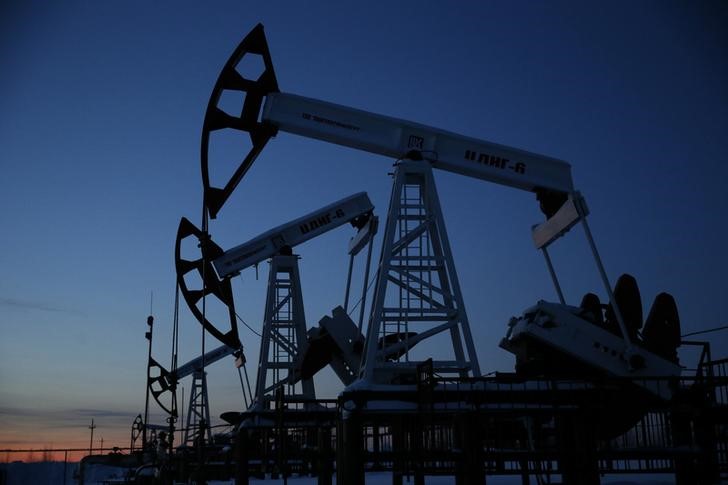Brent crude prices increased on Monday, hitting a four-month high as a rally in wider commodities markets encouraged buying ahead of a meeting of oil producers in Doha next Sunday, aimed at freezing current output levels.
Brent crude futures, the global benchmark, were up 92 cents at $42.86 a barrel by 1405 GMT, having reached a session high of $43.06, the highest level since Dec. 7.
The gains came after last week’s rally, when crude rose 6 percent in one session on the back of a drop in the rig count of U.S. drillers to its lowest since November 2009.
U.S. WTI crude also rose on Monday, gaining 82 cents to $40.54 a barrel and touching an intra-day high of $40.75, near a three-week high.
“All commodities are going up. It could be (investors) buying into dips every now and then as people are looking for opportunities to get long,” Natixis commodity strategist Abhishek Deshpande said.
Gold prices also touched their highest level in almost three weeks, while silver and platinum were up more than 2 percent.
A weaker U.S. dollar gave a push to buyers as commodities priced in the currency became cheaper to purchase.
Oil traders continue to place hopes on the oil producers’ meeting in Doha aimed at propping up crude prices that have been severely depressed by a global supply surplus.
But analysts at Goldman Sachs, who expect oil to average $35 a barrel in the second quarter, warned that meeting in Qatar could end with bearish results for the market.
Last week many oil market speculators approved a more bearish outlook as data from the InterContinentalExchange (ICE) indicated that net long positions on Brent had been cut to 355,225 contracts in the week to April 5.
However, analysts are foretelling firmer demand for oil over the longer term.
Researchers at Bernstein expect global oil demand to increase at a mean annual rate of 1.4 percent between 2016 and 2020, compared with annual growth of 1.1 percent over the past decade.
“We expect oil markets to rebalance by the end of 2016. This will allow prices to recover towards the marginal cost of $60 per barrel,” Bernstein said, adding that it expects global demand to reach 101.1 million bpd by 2020, from the current 94.6 million bpd.
